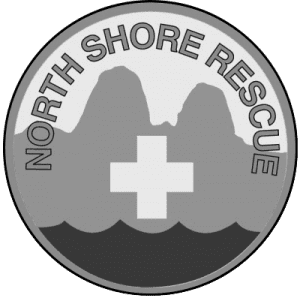The international commission on alpine rescue classifies hypothermia into five stages based on core body temperature. Each stage can also be differentiated by clinical findings in the field when core temperature reading may not be available.
HT I: Mild Hypothermia, 35-32 degrees
Normal or near normal consciousness, shivering
HT II: Moderate Hypothermia, 32-28 degrees
Shivering stops, consciousness becomes impaired
HT III: Severe Hypothermia, 24-28 degrees
Unconscious, may be difficult to detect vital signs
HT IV: Apparent Death, 15-24 degrees
HT V: Death from irreversible hypothermia
The goals of treating all stages of hypothermia are the same. Prevent further heat loss by radiation, convection, conduction and evaporation. This means changing wet for dry clothing, insulating the patient from the environment, providing shelter from the environment and arranging evacuation. If possible the patient should be provided with hot sweet drinks and food as fuel for their body to produce heat. Once patients move beyond mild hypothermia they will likely no longer be able to produce enough heat to warm themselves. Once further heat loss is prevented with adequate clothing, insulation and shelter, they require the addition of external sources of heat for warming.
Treatment of mild hypothermia/HT I
Mild Hypothermia can often be treated simply by changing any wet for dry clothing, properly insulating the patient and providing hot sweet drinks for calories. If the patient is otherwise healthy and uninjured once they have been properly insulated and given adequate caloric replacement gentle exercise can be encouraged to further increased body temperature. If the patient is unable to move about due to illness or injury, external heat sources in the form of hot packs or hot water bottles should be added to the armpits and groin to prevent further cooling.
Treatment of Moderate hypothermia / HT II
Moderate Hypothermia is identified by the absence of shivering and the onset of impaired consciousness. At this stage careful handling becomes imperative to avoid deterioration and inducing cardiac arrhythmias due to heart muscle irritability from the cold. Active assistance by the patient should be discouraged. As above the patient should have wet clothing replaced with dry, be carefully insulated and sheltered from the environment and have external heat sources applied to the armpits, groin, neck and trunk. If they are still cooperative and able to swallow they can be carefully given hot sweet drinks under direct supervision. These patients all need to be evacuated to hospital as soon as possible.
Treatment of Severe Hypothermia / HT III
Patients with severe hypothermia will likely be completely unresponsive to stimuli. They usually will have signs of life (pulse and breathing) but this may be very difficult to detect because it may be at a very slow rate. Rescuers should check for at least a full minute for both pulse and breathing before determining them to be absent. Severely hypothermic patients must be handled as gently as possible to prevent cardiac arrhythmias. As in milder forms of hypothermia the most important principle is to prevent further heat loss with proper insulation. These patients should not be given anything to eat or drink. They should have external heat sources applied to intiate rewarming in the field and help prevent further cooling. Cardiac monitoring and higher level care by an advanced medical provider should be initiated as soon as possible and they should be evacuated to a hospital with cardiac bypass capabilities if possible.
Treatment of Apparent Death / HT IV
These patients will appear to be dead. They will not respond to stimuli and have no detectable signs of life such as heart rate or breathing. Despite their appearance of death there have been multiple reports of successful resuscitation of patients with profound hypothermia. Despite the severity of the condition the principles of management remain the same. Very gentle handling, prevent further heat loss and apply external heat sources to initiate rewarming in the field. Advanced medical personnel should be involved in the rescue as soon as possible to provide advanced life support care. CPR should be started once its continued maintenance can be guaranteed. It is ineffective to do CPR during a stretcher carry and therefore should not be started if the patient will be evacuated this way. These patients should be evacuated to a hospital with cardiac bypass capabilities.
When is it Hypothermia V or actual death?
When a patient can be declared dead in the field is a subject of great controversy in the medical field. There have been multiple amazing recoveries of patients with severe hypothermia that no one thought possible. If there is any doubt and it is safe for the rescuers to do so the patient should be treated as HT IV and evacuated to hospital. Ideally the decision to stop resuscitation should only be done by an experienced physician or advanced life support provider with the ability to monitor cardiac activity and measure core temperature in the field. Clearly in the wilderness environment this is not always the case. For the first responder and basic life support trained rescuer resuscitation efforts can be stopped or not initiated when it is determined that rescuer safety will be compromised by a prolonged resuscitation and rescue effort, there is obvious lethal injuries or the body is so frozen that the chest cannot be compressed during attempts at CPR.
References
Durrer B, Brugger H, Syme D. The medical on site treatment of hypothermia in consensus guidelines on mountain emergency medicine. Accessible on the ICAR website (www.ikar-cisa.org)
State of Alaska. Cold injuries guidelines (2005); accessible at http://www.chems.alaska.gov
Auerbacher P. Field guide to Wilderness Medicine 3rd edition 2008
Ellerton J. Casualty Care in Mountain Rescue 2nd edition 2006
